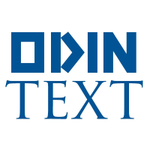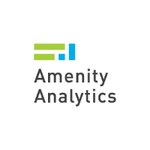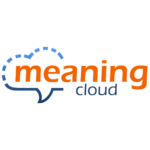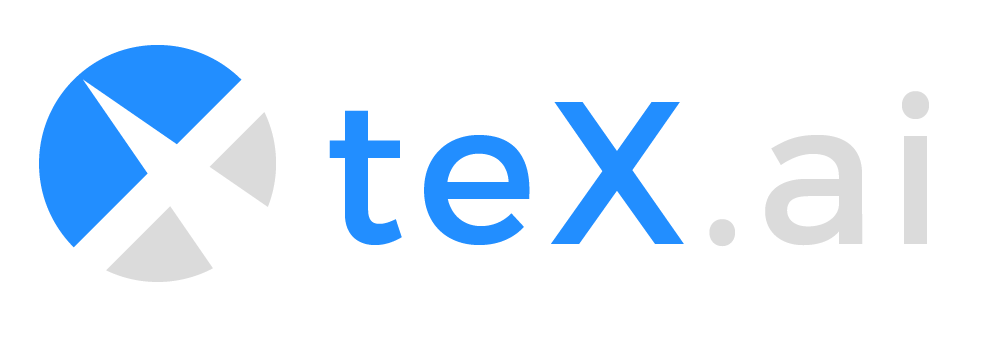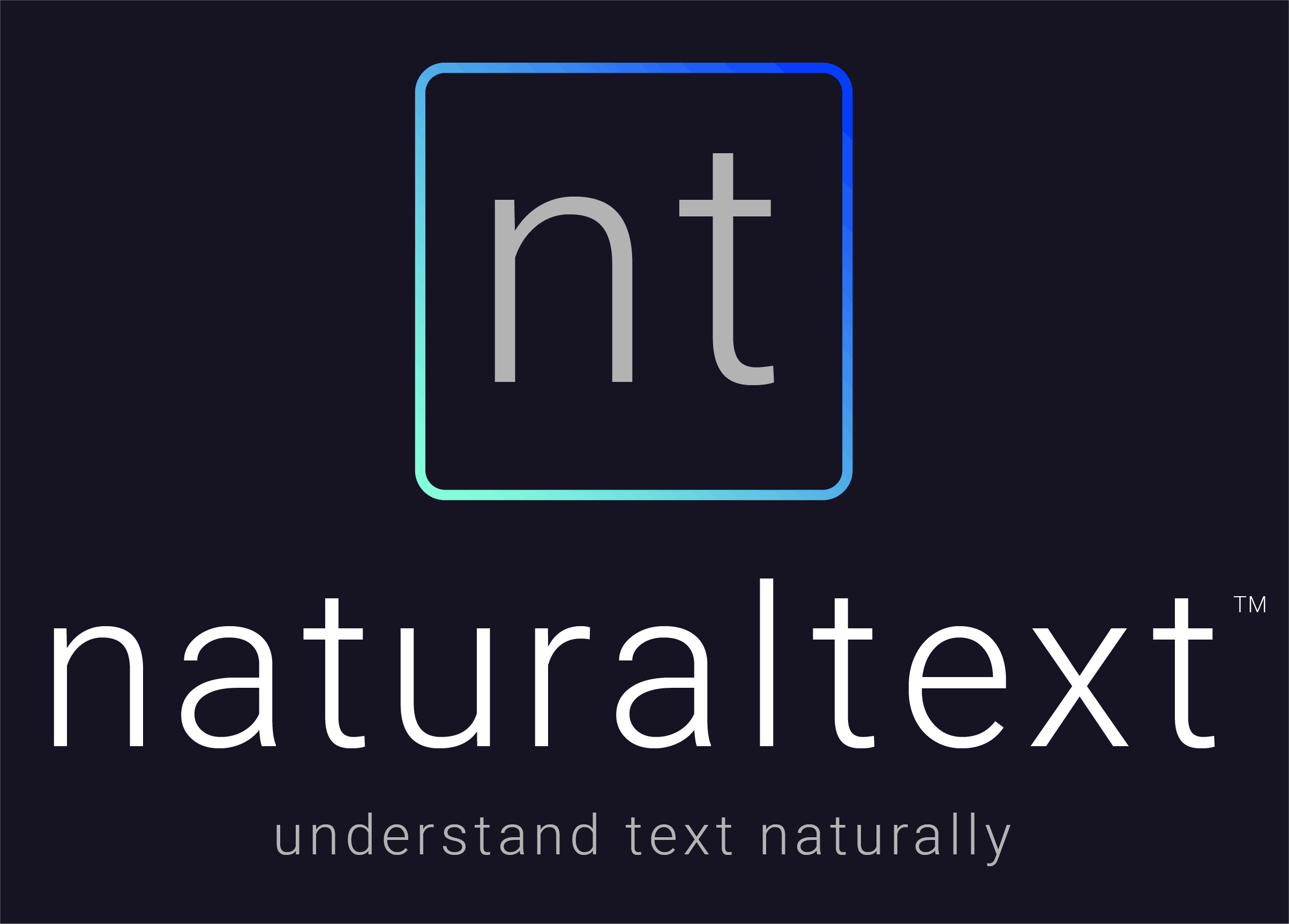What Is Text Mining Software?
Text mining software is a powerful tool that helps businesses and organizations extract important insights from massive amounts of text data. Text mining software, also known as text analytics or natural language processing (NLP), employs powerful algorithms to automatically scan and analyze text from a variety of sources, including emails, social media posts, customer comments, and others.
With an ever-increasing number of unstructured text data available, text mining software has become a must-have tool for enterprises seeking to extract important insights from data. It enables users to rapidly evaluate and summarize massive amounts of text, making it easier to spot patterns, trends, and feelings. One of the most essential advantages of text mining software is its ability to find and extract relevant keywords and phrases.
This function assists organizations in identifying the most commonly used terms and subjects within their text data, helping them to obtain a better understanding of their audience, requirements, and preferences. In addition to keyword extraction, text mining software provides advanced functions such as sentiment analysis, which may detect whether a document's overall sentiment is good, negative, or neutral.
This is especially useful for firms who want to understand how their customers react to their products or services. Furthermore, text mining software includes data visualization features, allowing users to show their findings in a visually appealing and understandable style. This tool is very useful for sharing insights with stakeholders and decision makers.
Buyers should search for text mining software that has a user-friendly and customizable interface, powerful data processing capabilities, and advanced analytical functions. It's also important to assess how well the program works with other tools and systems, as well as the vendor's degree of customer assistance and training.
What Are The Recent Trends In Text Mining Software?
The subject of text mining has advanced rapidly in recent years, owing to the rising availability of digital information and the need for more efficient and effective data processing methods. As a result, text mining software has grown to encompass a diversified set of features and capabilities that meet the demands of both enterprises and researchers.
One of the most noticeable developments in text mining software is the incorporation of natural language processing (NLP) techniques. NLP enables software to evaluate and comprehend text in a more human-like fashion, taking into consideration the context, grammar, and syntax of words and sentences. This has dramatically enhanced the accuracy and relevancy of text mining software's findings, making it an invaluable tool in industries such as marketing and customer service.
Another trend is the use of machine learning methods to improve the performance of text mining tools. These algorithms can automatically learn from data, recognize trends, and forecast outcomes, making text mining software a more powerful and configurable tool. This has created new opportunities for applications such as sentiment analysis, topic modeling, and text categorization, allowing businesses to acquire deeper insights from data.
Furthermore, there has been a shift toward cloud-based text mining software, which provides better scalability, flexibility, and accessibility to users. This enables real-time analysis of massive datasets, as well as easier collaboration and sharing of ideas. Furthermore, the proliferation of open-source text mining tools has made it more cost-effective for enterprises to implement text mining software, as they no longer need to rely on expensive proprietary software.
In terms of usability, text mining software has improved with the addition of interactive dashboards and visualization features. These qualities facilitate data interpretation and insight communication, making them more accessible to non-technical consumers. Finally, text mining software is keeping pace with the increasing demand for multilingual analysis. With firms operating abroad, there is a demand for software that can evaluate text in multiple languages. As a result, text mining software now includes language translation and entity recognition features to address this need.
Benefits Of Using Text Mining Software
Text Mining Software is a strong tool with several benefits for its users. It employs powerful algorithms and natural language processing techniques to extract useful insights and patterns from massive amounts of unstructured text data. This software's features give a variety of benefits for corporations, researchers, and individuals seeking to make sense of their textual data.
Let's explore, we'll go over the main benefits of employing text mining software to help you make an informed purchase.
1. Efficient And Effective Data Processing: One of the key advantages of text mining software is its capacity to efficiently and effectively process enormous amounts of textual data. It can evaluate massive amounts of unstructured data, such as emails, chat logs, and social media posts, in a fraction of the time that a human could. This saves businesses and academics a lot of time and resources, allowing for faster and more precise data processing.
2. Improved Data Quality: Text mining software not only accelerates data processing, but also enhances its quality. It employs modern ways to clean and filter out irrelevant, duplicate, or wrong data, guaranteeing that the data utilized in analysis is accurate and dependable. This results in more consistent and valuable insights, which can help with decision-making and strategy formulation.
3. Identifying Patterns And Insights: With the ever-increasing volume of data accessible, it can be difficult to filter through it all and spot patterns and trends. Text mining software automates this process by applying algorithms to identify hidden patterns and insights that would otherwise go overlooked. This allows firms to obtain a better understanding of their customers' behaviors, tastes, and market trends, offering them a competitive advantage.
4. Sentiment Analysis: Understanding client sentiment is critical for organizations looking to personalize their products and services to their specific demands. Text mining software includes sentiment analysis, which can detect and categorize positive, negative, and neutral attitudes in text data. This gives organizations significant insights into their consumers' thoughts, helping them to make better decisions and increase customer happiness.
5. Personalization: Personalization is an important part of modern marketing and customer service. Text mining software can use client information, such as feedback and preferences, to provide personalized recommendations, offers, and responses. This improves the customer experience, perhaps leading to higher loyalty and satisfaction.
6. Cost-Effective Solution: Investing in text mining software can be an affordable alternative for firms that need to process huge amounts of textual data on a regular basis. It reduces the need for manual data processing, which is time-consuming and costly. Furthermore, many text mining software alternatives have customizable pricing plans, making them affordable to organizations of all sizes.
Important Factors To Consider While Purchasing Text Mining Software?
When it comes to buying text mining software, there are various variables to consider. This sort of software is used to analyze enormous amounts of textual data and extract significant insights, making it a useful tool for both corporations and scholars.
To make an informed decision, thoroughly analyze the following factors:
1. Data Sources: When purchasing text mining software, the first and most significant consideration is the sort of data sources that may be used. Depending on your requirements, you may need software that can evaluate data from social media, customer reviews, research articles, and other sources. As a result, it is critical to select software that can handle the data formats you will be working with.
2. Usability: Because text mining software might have a high learning curve, simplicity of use is a crucial factor to consider. Look for software with user-friendly interfaces and easy tools to help you and your team extract insights and analyze data.
3. Features And Capabilities: The features and capabilities of text mining software vary widely, thus it is critical to examine your requirements and select software that provides the necessary functionalities. Sentiment analysis, topic modeling, and entity extraction are some of the main qualities to look for. Consider whether the product supports customization and integration with other tools or databases.
4. Accuracy And Reliability: The accuracy and reliability of the software's analysis are critical considerations. Look for software that has been tested and shown to deliver accurate results. You may also want to read reviews and testimonials from other customers to get a sense of how the product performs.
5. Scalability And Flexibility: As your business or research requirements change, you may need software that can scale up or down accordingly. Consider the software's scalability and adaptability, as well as its capacity to manage larger datasets and adapt to new data sources.
6. Assistance And Training: Because text mining software can be sophisticated, it is critical to assess the level of assistance and training provided by the software vendor. Look for software that includes detailed lessons, user guides, and responsive customer service to help you get the most out of your investment.
What Are The Key Features To Look For In Text Mining Software?
When it comes to selecting the best text mining software for your purposes, there are several important factors to consider. These features can significantly improve the efficiency and efficacy of the software, affecting your total user experience and results.
Here are the most important aspects to look for when considering text mining software:
1. Data Sources: The first item to consider is the software's ability to handle various data sources. Look for a solution that can handle both structured and unstructured data from a range of sources, including social media, emails, documents, and websites. This adaptability will help you to extract insights from a wide range of data, providing you a more complete picture of your company or sector.
2. Text Analytics: This feature is fundamental to text mining software, and it is critical to understand its possibilities. Text analytics use natural language processing (NLP) techniques to detect trends and extract useful information from text. Look for a platform that supports a variety of text analytics methodologies, including sentiment analysis, keyword extraction, topic modeling, and named entity identification. This will allow you to obtain deeper insights from your data and make more educated decisions.
3. Visualization Tools: Visualizing data is critical for rapidly and efficiently comprehending text mining results. Choose software that provides dynamic and customized visualizations of your text data, such as word clouds, heat maps, or charts. These visual representations can help you spot trends and patterns, as well as better communicate insights to your team or stakeholders.
4. Machine Learning Capabilities: The best text mining software uses machine learning algorithms to constantly increase accuracy and offer more precise results over time. Look for a technology that combines supervised and unsupervised learning techniques to improve performance. This ensures that your text mining activities are relevant and yield meaningful results.
5. Customization Options: Because each organization or industry has distinct demands and requirements, it is critical to select text mining software that allows for customization. Look for a program that lets you customize its features and functionalities to meet your individual needs and aims. This will allow you to get the most out of the software and obtain the desired results.
6. User-Friendly Interface: When selecting text mining software, make sure it has an intuitive and easy-to-use interface. This will save you time and effort by allowing you to focus on data analysis and interpretation rather than learning how to utilize the software. When assessing text mining software, consider these critical qualities to guarantee that you select a solution that fulfills your specific requirements and gives reliable and useful insights. Keep in mind that different software may excel in specific areas, so prioritize your needs and select the greatest fit for your organization.
Why Do Businesses Need Text Mining Software?
Today's businesses face an enormous amount of data, ranging from consumer feedback and social media posts to market research and internal papers. Making sense of all this unstructured data can be difficult, but using text mining tools allows businesses to extract useful insights and make informed decisions. Text mining software analyzes enormous volumes of text using advanced algorithms and natural language processing (NLP) approaches to detect patterns, trends, and sentiment.
This enables organizations to better understand their customers, competitors, and the entire market landscape. One of the key reasons for organizations to use text mining software is to improve customer satisfaction. Businesses can discover frequent pain areas and take corrective action by monitoring customer feedback from multiple sources, such as online reviews and social media posts.
This not only helps to retain customers, but also improves the entire brand reputation. Additionally, text mining software can help organizations remain ahead of the competition. Businesses can uncover their competitors' strengths and weaknesses by studying internet evaluations and social media interactions, which they can then use to develop their own strategy. This may provide them a competitive advantage in the market.
In addition, text mining tools can help with market research and product development. Businesses can learn about consumer preferences, emerging trends, and even new product prospects by researching online discussions and feedback. This can help organizations save time and money on traditional market research methods. Additionally, text mining tools can assist organizations discover and prevent fraud.
Businesses can detect suspicious patterns or abnormalities in massive amounts of text data, which may suggest fraudulent activity. This can help firms avoid financial losses while maintaining client trust. Finally, text mining tools can help firms with compliance and risk management. Businesses can detect and reduce potential compliance risks by reviewing internal documents and conversations. This can help firms avoid legal troubles and reputational damage.
How Much Time Is Required To Implement Text Mining Software?
The implementation time for text mining software varies based on various aspects, including the intricacy of the data, the size of the dataset, and the product's special features. In general, the process can take a few days to many weeks, and in rare situations, months. Before beginning the implementation process, you should have a comprehensive grasp of your organization's goals and objectives.
This will assist you in determining which text mining software is most suited for your organization and can also provide you with a better estimate of the time required for installation. The first step in installing text mining software is to collect and organize your data. This entails cleaning and structuring your data to ensure that it works with the software. Depending on the quality and size of your data, this process can take quite some time.
Next, you must train the software to recognize patterns, identify key phrases, and extract relevant information from your data. This often entails designing and testing algorithms, which can be time-consuming. However, this stage is critical for assuring the software's accuracy and efficacy in meeting your business requirements. Once the software has been trained and set to meet your specific requirements, it can be connected into your company's systems.
This can include installing the software on servers and connecting it to other apps and databases. The time necessary for this stage will be determined on the complexity of your systems and the level of customization needed. Finally, once the program is fully integrated and operating, users may encounter a learning curve as they try to grasp and use its functions. This stage may necessitate additional training and assistance, which should be considered into the total implementation time.
What Is The Level Of Customization Available In Text Mining Software?
When it comes to text mining software, personalization is a key consideration. This refers to the capacity to customize and tailor the program to your individual requirements and tastes. Different software may provide varied amounts of customization, so it is critical to understand the possibilities available before making a purchase.
Most text mining software will allow some amount of customisation, such as the ability to add or delete specific features, tweak user interface settings, and change data input and output options. However, the amount to which you can personalize the program may vary between providers. Some text mining software provides extensive flexibility, allowing users to develop their own workflows, design bespoke reports and dashboards, and even connect third-party tools and plugins.
This can be useful for enterprises with specialized data requirements or those seeking more complex functionality. On the other side, certain text mining tools may have less customization choices, focusing on simpler and more streamlined data analysis. This may be appropriate for folks who are new to text mining or have simple data analysis needs.
Before making a purchase, you should analyze your individual requirements as well as the level of customization provided by various text mining software providers. This will assist you in selecting software that is tailored to your specific requirements and capable of handling the data analysis and processing you want. Do not be afraid to examine several solutions and request demos or trials to see whether program provides the appropriate level of flexibility for you.
Which Industries Can Benefit The Most From Text Mining Software?
Text mining software transforms businesses across industries by extracting important insights from unstructured data. It is a sophisticated tool for analyzing and organizing vast amounts of text data, including consumer feedback, social media posts, and online reviews.
Text mining software can provide major benefits to the following industries:
1. Retail: With the rise of e-commerce and online purchasing, retailers are swamped with customer feedback and reviews. Retailers may use text mining tools to better analyze customer sentiment, identify popular items, and track trends, allowing them to make data-driven decisions.
2. Healthcare: As medical data and patient input become more digitally accessible, the healthcare industry can use text mining tools to extract important insights from patient surveys, physician notes, and clinical trials. This can help improve patient treatment, identify potential dangers, and respond to customer concerns.
3. Financial Services: The finance business processes large amounts of textual data from a variety of sources, including financial reports, market news, and client feedback. Financial organizations can use text mining software to uncover patterns, monitor market movements, and detect potential fraud, thereby improving their decision-making processes.
4. Marketing And Advertising: Text mining software can help marketers better analyze consumer behavior, determine customer preferences, and target certain demographics with their products or services. It can also help with sentiment analysis of social media posts, making it a valuable tool for developing efficient marketing efforts.
5. Customer Service: Text mining tools may transform customer service teams by swiftly identifying and analyzing client complaints, feedback, and reviews. This can help businesses improve their products and services, respond to customer issues, and increase overall customer happiness.
6. Education: Text mining software can help educational institutions analyze student feedback, course assessments, and academic research papers. This can help identify areas for development, track student satisfaction, and anticipate student achievement.
Conclusion
In conclusion, text mining software is a powerful tool that may help businesses, researchers, and people extract useful insights and information from massive amounts of text data. Its powerful algorithms and analytics capabilities allow users to evaluate and summarize unstructured material, identify patterns and trends, and make more data-driven decisions.
When choosing text mining software, you should examine your individual requirements as well as the features and functions that are most essential to your use case. Some important variables to examine include the software's data processing capabilities, ease of use, and compatibility with existing systems, as well as its cost and support options. It is also critical to select a recognized and trustworthy vendor who provides regular updates and ensures high levels of data protection.
In addition, reading user reviews and running a sample or demo of the product can help you make an informed decision. Overall, investing in text mining software can give several benefits by streamlining text data processing, ultimately enhancing your organization's efficiency and effectiveness. With the appropriate software and attitude, you can maximize the value of your data and stay competitive in today's data-driven market.






